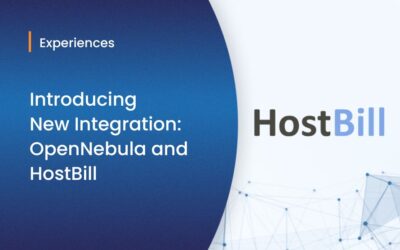TeleData is a regional internet service provider founded in 1997 with headquarters located in the City of Friedrichshafen in the South of Germany. The company offers a wide range in telecommunication solutions and builds its own fiber optic internet Backbone network. One of the core values of the company is to be a premium full service provider which generates its Internet, Webhosting, Telephony, TV, Fiber Access and Cloud services within its own three datacenters and is operated by a young team of specialists.
TeleData runs several OpenNebula installations since late 2011. Different cloud stacks such as OpenStack, Proxmox, Eucalyptus, CloudStack among others have been tested within its laboratory premises. Not to mention OpenNebula,which is quite impressive.
In 2013 TeleData’s Infrastructure was built completely from scratch – with the best breed technologies as a Service (IaaS) platform. In the case of OpenNebula it turned out to be the most mature and proven Cloud-Stack available – lacking of unnecessary complexity or unneeded overhead.
In the last two years TeleData has been developing a regional IaaS-Cloud spanning across three Datacenters offering virtual Servers and virtual Datacenters for its customers.
OpenNebula is today’s central computing platform at TeleData. Services like E-Mail, DNS and Webhosting were backed (supported) by the TeleData Cloud – with OpenNebula as main structure for thousands of customers. The Automation of all cloud operations is established with Puppet and The Foreman.
HP Servers were chosen as Hardware for the OpenNebula Clusters, Cisco 10 Gigabit Networking and NetApp Storage. The virtualization Hosts are operated using Debian GNU/Linux, Linux QEMU/KVM and OpenVSwitch – every Server and/or virtual Datacenter has its own 802.1Q VLAN and an official IP-Subnet including a strong internet uplink, provided by our peerings at DE-CIX and AMS-IX.
OpenNebula worked just right out of the box – there were only a few simple modifications necessary to reach the best performance and reliability levels. For example, a “Host-Failover Hook” was created to ensure the proper functioning of STONITH/Fencing in case of a hosting error. The “live-migration” Drivers were modified for optimal performance. Another example is the optimization of the OpenVSwitch – for maximum security and performance (VLAN isolation, monitoring).
The next step will be a major change in the storage level – the plan is to remove the NetApp Storage Systems and replace them with Ceph, a redundant Object Storage. The integration of OpenNebula and Ceph is working according to plan in TeleData´s Testlab.
For TeleData, the sun is shining through the “Clouds” with OpenNebula.




0 Comments